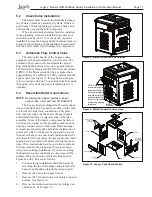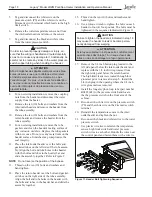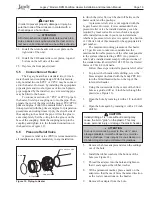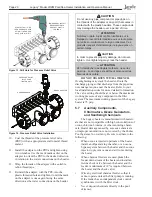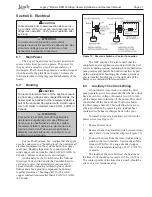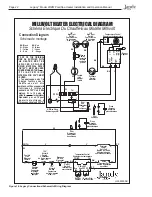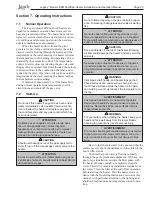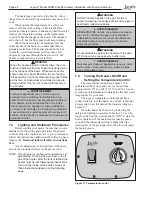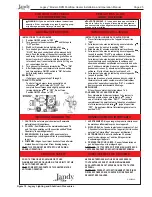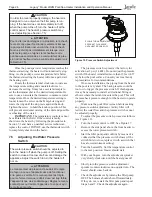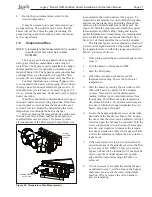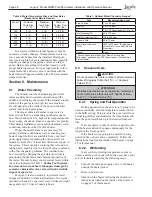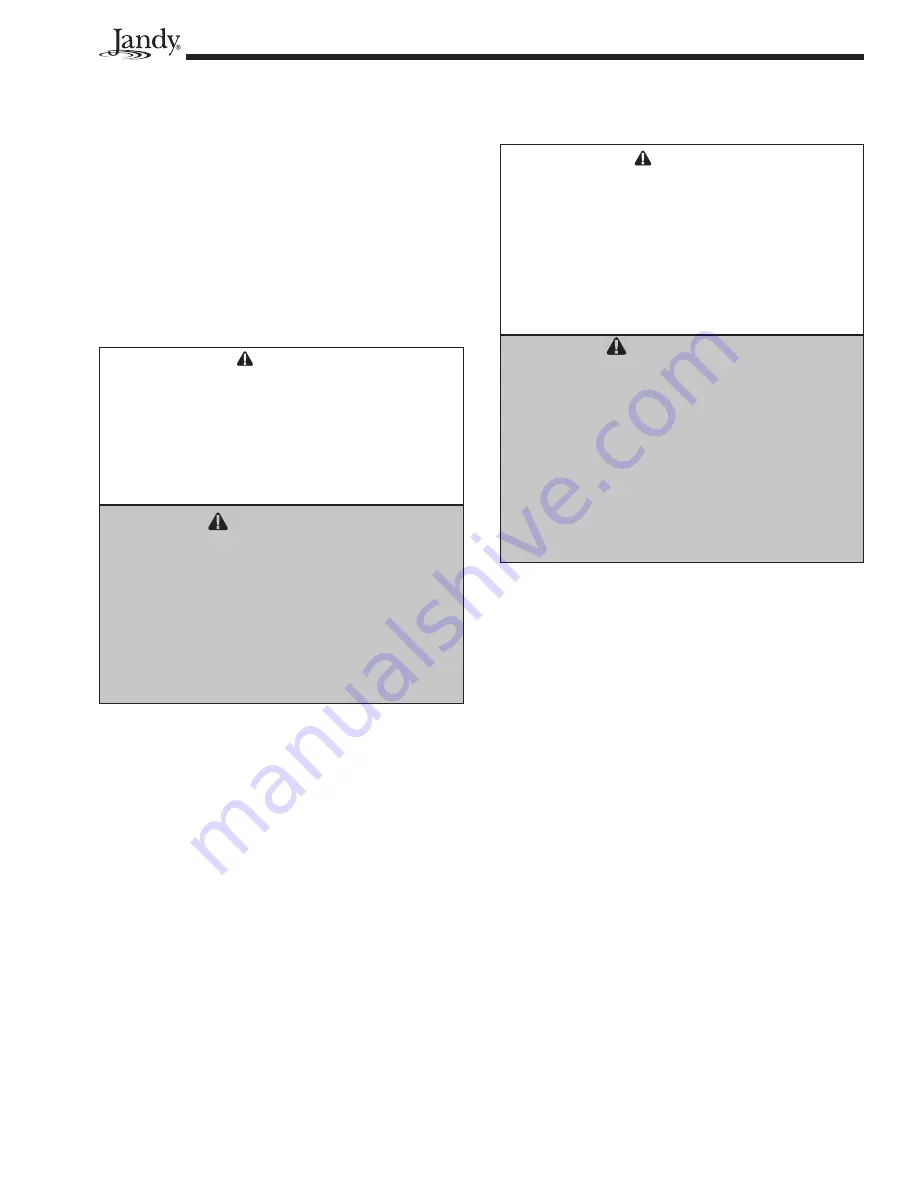
Page 13
Legacy
™
Model LRZM Pool/Spa Heater Installation and Operation Manual
3.2.2 Indoor and Outdoor Shelter
Installations
WARNING
Vent pipe diameter must be as required by the Na-
tional fuel Gas Code ANSI Z223.1 or the Canadian
Installation Codes for Gas Appliances CAN/CSA-
B149.1. Undersize pipe can result in inadequate
venting and oversize pipe can result in vent conden-
sation. In either case the result can be release of
combustion products to the indoors. This can cause
serious injury or death by carbon monoxide poison-
ing or asphyxiation.
AVERTISSEMENT
Le diamètre des tuyaux de ventilation doit répondre
aux exigences du
National Fuel Gas Code
ANSI
Z223.1 ou du code canadien des installations des
appareils à gaz CAN/CSA-B149.1. Des tuyaux trop
petits risquent d’entraîner une ventilation inadé-
quate et des tuyaux trop gros risquent de provoquer
une condensation dans les tuyaux. Dans un cas
comme dans l’autre, des produits de combustion
risquent de s’échapper dans le bâtiment et causer
des blessures graves ou l’asphyxie par le mon-
oxyde de carbone.
All indoor installations and outdoor shelter
installations require the addition of a factory approved
draft hood. The draft hood must be installed without
modi
fi
cation.
All vent installations must be made in accordance
with all local, state or provincial codes and with:
1.
Chapter covering "Venting of Equipment" of
the national Fuel Gas Code, ANSI 223.1 latest
edition , or the applicable provisions of the local
building codes.
2.
In Canada, CAN/CSA-B149.1.
Avoid long horizontal runs of the vent pipe, and
90° elbows, reductions and restrictions. Horizontal
runs must have at least a 1/4 inch rise per foot (20mm
per meter) in the direction of
fl
ow.
Avoid terminating heater vents near air condi-
tioning or air supply fans. The fans can pick up
exhaust
fl
ue products from the heater and return them
inside the building, creating a possible health hazard.
Do not locate the vent terminal where
fl
ue
products could strike against building materials and
cause degradation.
Vent opening should be well away from trees
or other obstructions that would prevent free air
fl
ow
to and from vent terminal. Do not terminate the vent
under decks, stairways, or car ports.
Be sure to support all venting so that connec-
tions will not separate and so that the weight of the
vent pipe does not rest on the heater draft hood. All
connections should be made with rustproof sheet metal
screws. Do not weld or fasten the vent pipe to the
room. Additional air must be supplied to compensate
for such exhaust.
The information in Table 3 is not applicable in
installations where exhaust fans or blowers of any type
are used. Such installations must be designed by quali-
fi
ed engineers.
If a blower or fan is used to supply air to the
room, the installer should make sure it does not create
drafts which could cause nuisance shutdowns of the
pilot.
The heater must be completely isolated and
protected from any source of corrosive chemical fumes
such as those emitted by trichlorethylene, perchloro-
ethylene, chlorine, etc.
WARNING
Do not store any chemicals, cleaners, or other cor-
rosive material near combustion air openings or in
the room. Avoid locating dryer vents in the vicin-
ity of combustion air openings. Failure to prevent
corrosive materials from mixing with combustion air
can result in reduced heater life and unsafe heater
operation.
AVERTISSEMENT
N’entreposer aucun produit chimique, produit net-
toyant ou produit corrosif à proximité des bouches
d’air de combustion ou dans la pièce. Éviter de
placer des tuyaux de ventilation pour sécheuse à
proximité des bouches d’air de combustion. Le fait
de laisser des matières corrosives se mélanger à
l’air de combustion risque de réduire le cycle de vie
de l’appareil de chauffage et de compromettre son
fonctionnement.
3.2
Vent Pipe Sizing and General
Installation
3.2.1 Outdoor
Installations
For outdoor installations, exhaust venting consid-
erations will determine the placement of the heater
(See Section 2.3.4). If the heater cannot be placed so
as to meet the requirements stated in Section 2.3.4, a
vent pipe and cap may be added to the heater to move
the exhaust vent opening to a position that complies
with the requirements. When the heater is installed in
areas of high wind or when unavoidably installed near
a vertical obstruction where downdrafting may occur,
it may be desirable to add a vent cap directly to the
top of the heater. In all cases, vent pipes and caps must
be of the same diameter as the exhaust outlet of the
heater. Approved vent caps may be obtained through
your Jandy distributor.
Summary of Contents for Legacy LRZM
Page 2: ......

















